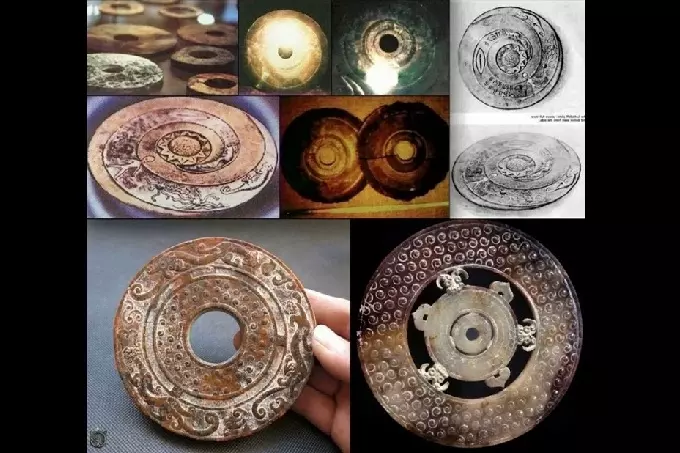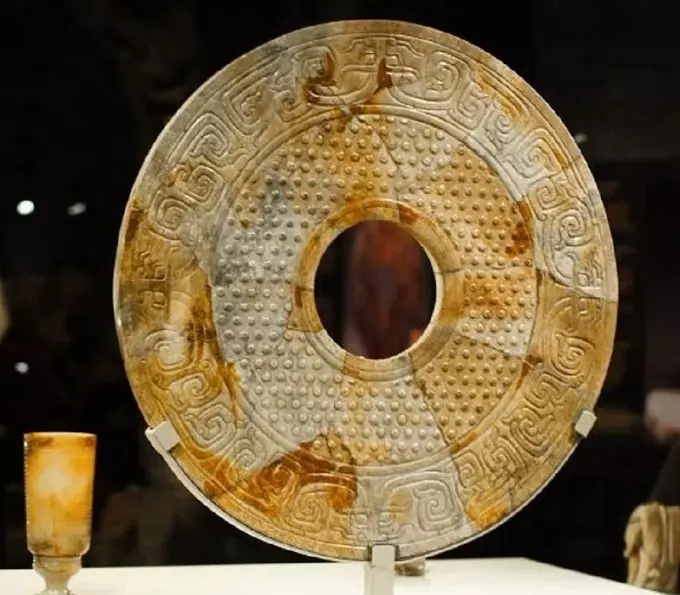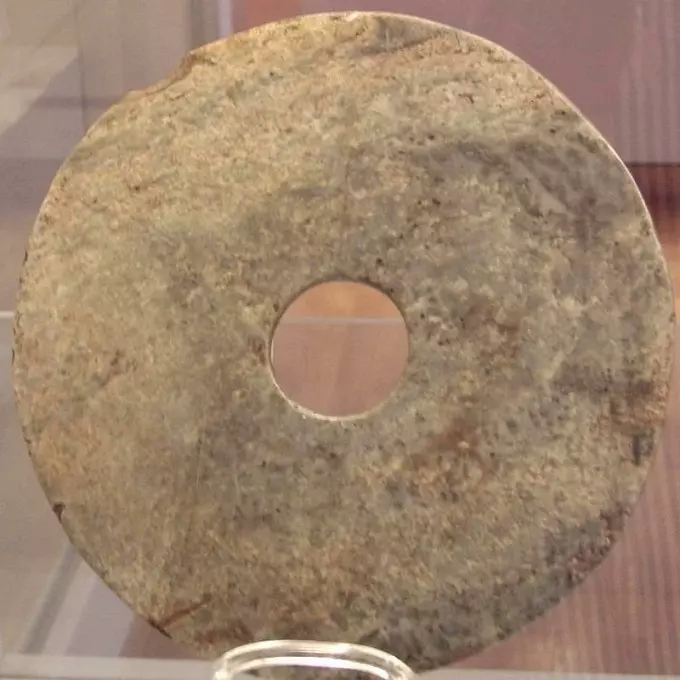The Dropa Stones – about ancient artifacts found in Asia

In 1938 the history of the Dropa Stones and Baian-Kara-Ula discs began. Dr. Chi Pu Tei went with an expedition to the spurs of the range Baian-Kara-Ula, which is on the border with Tibet, where one of the tops has a number of interconnected caves.
In one of these caves, the expedition of Dr. Chi Pu Tei discovered the place of the ancient tombs, actually, the entire cemetery – in the rock were hollowed out niches, caves, each of which rested strange mummified bodies. The total number of burials is impressive – a total of these cave crypts was 716.

The very phenomenon of burials in the caves of China was common, but archaeologists have paid attention to the strange appearance of the mummified bodies – they were all very small in height, about 115 centimeters, and had anthropological differences from the Tibetans who inhabited this region of China. There was even a suggestion that mountain monkeys of an unknown species were buried in the cemetery.
However, the author of the hypothesis could not explain how monkeys could have produced the burial. Information about the mummies that came down to us, is somewhat contradictory – some sources call the height of the mummies in the burials, up to 150 centimeters, while noting the fragility of their bodies and the presence of disproportionately large heads.
The most interesting fact for us is that at the feet of each mummy, there was a stone disc with a hole in the center. The discs were two centimeters thick and thirty centimeters in diameter. From this hole in a spiral towards the edge of the disk, deep double grooves were made inside which there were strange signs resembling hieroglyphs.

Scientists have determined that they are dealing with some kind of stone book. Some sources say that the discs had completely inexplicable qualities – using instruments, it was possible to determine that they produced a strange vibration.
Upon completion of the expedition, archaeologists took some discs with them to conduct further research and, if possible, decipher the mysterious writings on the stones. The stone discs were later called the “stones of Dropa” or “discs of Dropa”.
The records on the discs were of the greatest interest: deciphering them could provide answers to many questions that had arisen. That is exactly what Professor Tsum Um Nui of Peking University did.
Deciphering the mysterious recordings took some twenty years. Finally, he was able, after such a long time to cope with the difficult task and decipher the mysterious symbols.

In 1962 the scientist was going to publish the results of his work, but the publication of the deciphering results was prohibited by order of the Beijing Academy of Sciences. The sensationalism of the records was that they spoke of a visit to Earth by aliens. During this visit, their ship crashed in the Himalayas, and they were forced to stay on our planet.
The discs refer to the Dropa or Kham tribes, which is what they were called. Most likely, we are talking about the aliens who remained to live in Tibet. According to another version, the aliens established friendly relations with the local Kham tribe and helped each other to survive.
According to the description, the aliens were indeed small in stature, had sparse body hair, and the main feature was their blue eyes, which are not found in the inhabitants of Asia.




